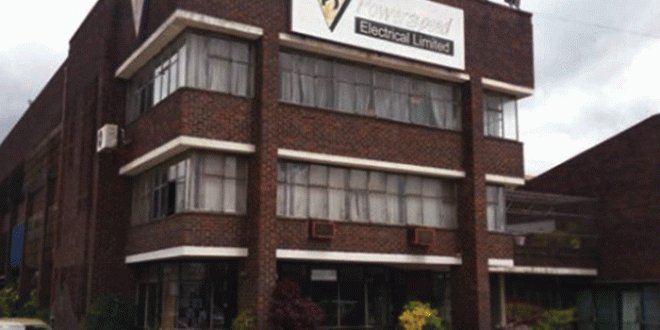Miners seek review of taxes, royalties
THE Chamber of Mines of Zimbabwe (CoMZ) has called on the Treasury to review the special capital gains tax on the transfer of miningtitles and royalties.
This comes as Finance, EconomicDevelopment and Investment Promotion Minister Professor Mthuli is expected topresent the mid-term budget statement in Harare this afternoon.
In its submissions, CoMZ said the 2024 Finance Act introduced the Special Capital Gains Tax (CGT)on the transfer of mining titles and so far of major concern to investors was theapplication of the tax in retrospect, backdated 10 years and for it to applyeven if the titles had been forfeited or abandoned.
“We are of the view thatinvestors or mineral producers that had complied with the law at the time theytransferred title should not be affected by this new law as it bringsuncertainty on Zimbabwe as a destination for investments.
“Furthermore, the rate oftax at 20 percent is too high compared to what obtains in other miningjurisdictions, thus it has the potential to undermine the country as a potentialrecipient of investments in mineral exploration,” it said.
In addition, CoMZ said theprinciple of levying the tax on gross proceeds as well on the buyer was againstglobal best practice where capital gains tax was chargeable on the transaction gain and levied on the seller that would have realised a profit on disposal.
“It is against the abovethat we appeal for a review of the new tax in line with best practice where thetax is levied on the actual gain and is chargeable to the seller.
“We are also of the viewthat the tax must not be applied in retrospect and that the rate be maintainedat 5 percent as effected in 2017.”
In general, the miningindustry which is Zimbabwe’s major economic centrepiece constitutes more than 75 percent of the country’s exports and the sector employs over 53 000 people formally.On the royalties, theminers’ representative body appealed for review of the framework whichremarkably went up by 180 percent from 2,5 percent to 7 percent for platinumand this was negatively impacting on the viability of platinum projects.
“Information gatheredfrom platinum producers shows that the increase in platinum royalty resulted ina 5 percent average increase in overall production cost.
“The situation has beenworsened by a slowdown in Platinum Group Metals (PGM) prices, with most elementsof the PGMs basket recording a significant decline in prices in 2023.
“The platinum producersare operating at full capacity and unlike other mineral sub-sectors, they havelittle scope to ramp up production to cover for revenue losses due to softeningPGMs prices,” said CoMZ.
“Resultantly, thecontribution of the platinum group metal miners to the economy has beendeclining over the last year.”
Given the currentsituation and the need to restore viability as well as maximise the contribution of theplatinum industry to the economy, the chamber appealed for a commodity price-linked royalty framework as follows: platinum price below US$1 100 per ounce, aroyalty rate of 3 percent, for a platinum price above US$1 100/ounce, royalty of5 percent.
“This royalty frameworkis in line with best practice and has been successfully applied for the goldsector, thus, we feel that the same framework can assist platinum producersduring the depressed price environment and can also maximise revenue to the Governmentduring price booms as is the case for gold at the present moment,” said CoMZ.
It said the royalty rate for diamonds of 10 percent was also impacting negatively on the viability of mining projects.Producers of alluvial diamonds, which are predominantly low quality, are the mostaffected as their prices have taken a huge knock.
“We are appealing for aroyalty of around 7 percent in line with best practice as well as restoring the viability of diamond producers.
The royalty for diamonds in South Africa is 5percent.“The royalty for lithium, whichwent up by 150 percent from 2 percent to 5 percent, is also high andunaffordable for lithium producers.“To note, most lithiumprojects are still new and would require the Government support to ensure theyare fully implemented.
“Lithium prices have alsotumbled over the past 12 months impacting negatively on the viability oflithium projects.”Last year, lithium priceswent down by nearly 80 percent from US$80 000 in 2022 to US$18 750 by the endof 2023.
The fall was mainlyattributed to an oversupply in the market, contrasting with the previous year’shigh demand and price levels.CoMZ has recommended a royalty of three percent on lithium to support the full implementation ofprojects in the sector.
The miner’srepresentative body said the beneficiation tax on PGM concentrates remains anarea of concern to the producers as it increases the cost of production therebyweighing down on the viability of the projects.
“With the mediumprospects for the PGMs industry now under threat from the weak demand for PGMson the backdrop of the energy transition and electric vehicle revolution thathas seen prices for the PGMs basket plummeting, most high-cost PGMs projectswill face serious viability challenges.
“Meanwhile, platinumproducers have since committed to process their concentrates in-country withthose that have excess smelting and processing facilities.
“We appeal for defermentof the beneficiation tax and recommend a beneficiation roadmap that is alignedto global developments for the PGMs industry, and roadmaps agreed with PGMsproducers that are finalising construction of their processing facilities,”said CoMZ.
At the moment, the miners’representative body said most mining companies are facing foreign exchangeshortfalls to meet their operational requirements and funding of expansionprojects.
The available foreigncurrency has been coming down largely due to falling mineral earnings (on theback of softening commodity prices), with the mandatory 75 percent beingapplied on a shrinking foreign exchange base.
“Statistics gathered fromthe PGMs sector, for example, show that the amount of available foreigncurrency to the producers has declined from around US$1,7 billion in 2022, toan estimated US$1 billion as of the end of the first quarter of 2024.
“With the PGMs producersundertaking expansion projects and construction of beneficiation facilities,they are now facing cash flow constraints with some of the mines deferring somecapital projects.-herald











